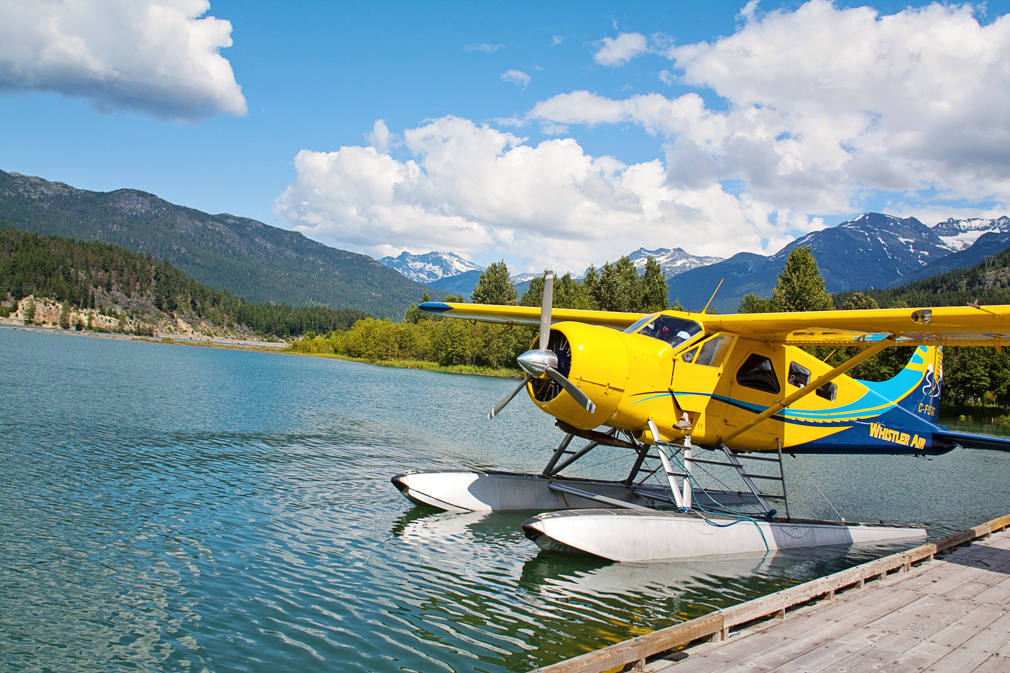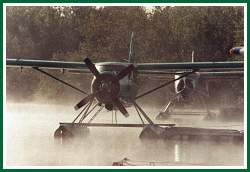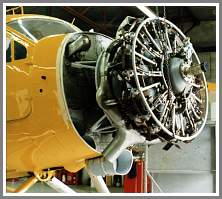
Engine Conversion
Pratt & Whitney Ceased Production Of Radial Engines
Phone: +1 705 743 9483
Fax: +1 705 749 0841
Pratt & Whitney ceased production of radial engines and many spare parts in 1952. Many of the engines, still in service, incorporate high time components of unknown service history, which may be susceptible to low stress, high-cycle, fatigue failure.
AIRTECH CANADA responded to concerns of the P&W 1340 radial engine reliability by introducing Polish manufactured radial engines to the deHavilland Otter. These radial engines are in current production and use used in other utility and agricultural aircraft.

DHC-3/1000 hp Conversion
AIRTECH CANADA’s combination of the rugged deHavilland Otter airframe with the dependable PZL 1000 hp engine has produced a general-purpose utility aircraft with the following unique features:
A short take-off and landing capability that enables the aircraft to be operated in its wheel, ski or floatplane configurations from unprepared, confined, areas at pressure altitudes ranging from sea level to 10,000 feet under all climatic and geographical conditions, a capability unmatched by any other aircraft of comparable gross take-off weight available today.
An enhanced utility that extends the aircraft’s operational life well into the 21st century, thus ensuring the continuation of a much needed economical means for supporting development within relatively inaccessible areas.
An operational capability and utility that is readily available at a cost significantly less than that of any known near competitor.

First STC’d in Canada in 1983 and STC’d in the USA in 1987, the current conversion uses a 1000 hp, 9 cylinder reminiscent of the R1820 Wright “Cyclone”. This engine also powers the giant AN-2 biplane, and the well known M-18 “Dromader” agricultural aircraft. The “Dromader” and 1000 hp Otter both share the same 4 bladed propeller.
To date, seventeen 1000 hp Otters have been completed. One operates in Peru, two in Alaska, one in Idaho, and the rest based in locations across Canada. The type has now accumulated more than 45,000 hours. This experience has allowed the engine TBO to be extended from an initial 1000 hrs to 1550 hrs.
With 400 more horsepower than the original P&W R1340, the 1000 hp engine offers significant performance gains. Take off and climb are dramatically improved, especially on floats. Fuel consumption is higher, but the corresponding increase in cruise speed and the ability to climb quickly for improved TAS and winds aloft, easily compensate for this. Wear and tear from vibration on the airframe is significantly reduced as shorter water take-off runs are achieved.
The 1000 horsepower ASz-62IR-M18 engine has been specifically adapted for the Otter by incorporation of a dry vacuum pump drive, five point cylinder priming, custom air intake and carb heat system, and internal modifications to the fuel pump. The engine mount and cowlings are new, and the increased power requires replacing the original 9 inch oil cooler with an 11 inch cooler. The Otter’s distinctive exhaust and augmenter tubes are also removed and replaced by a single stack exhaust manifold.


Other modification options offered to the operators of the converted Otter include an aft shelf installation, fire suppression system, fire detection system, direct drive electric starter, engine and prop spares, North American Spark Plug ignition wire set, and cabin heat installation
As the P&W R1340 engines age, become less dependable, and more expensive to maintain, AIRTECH CANADA believes that the reliability, low initial investment, operating economy, and performance improvements offered by the 1000 hp conversion will continue to become more attractive to Otter operators.
